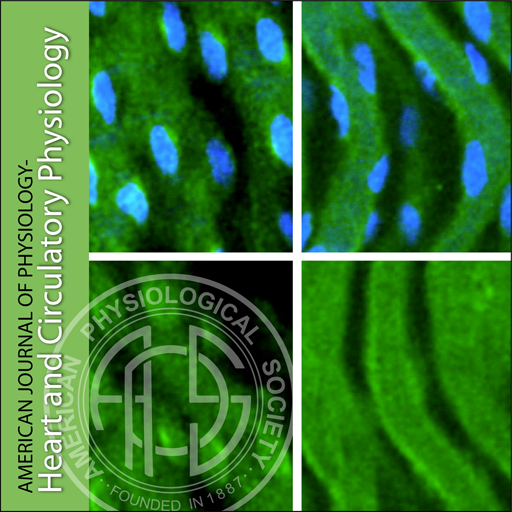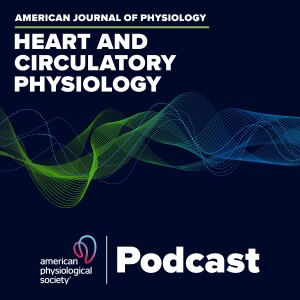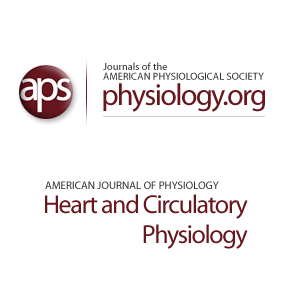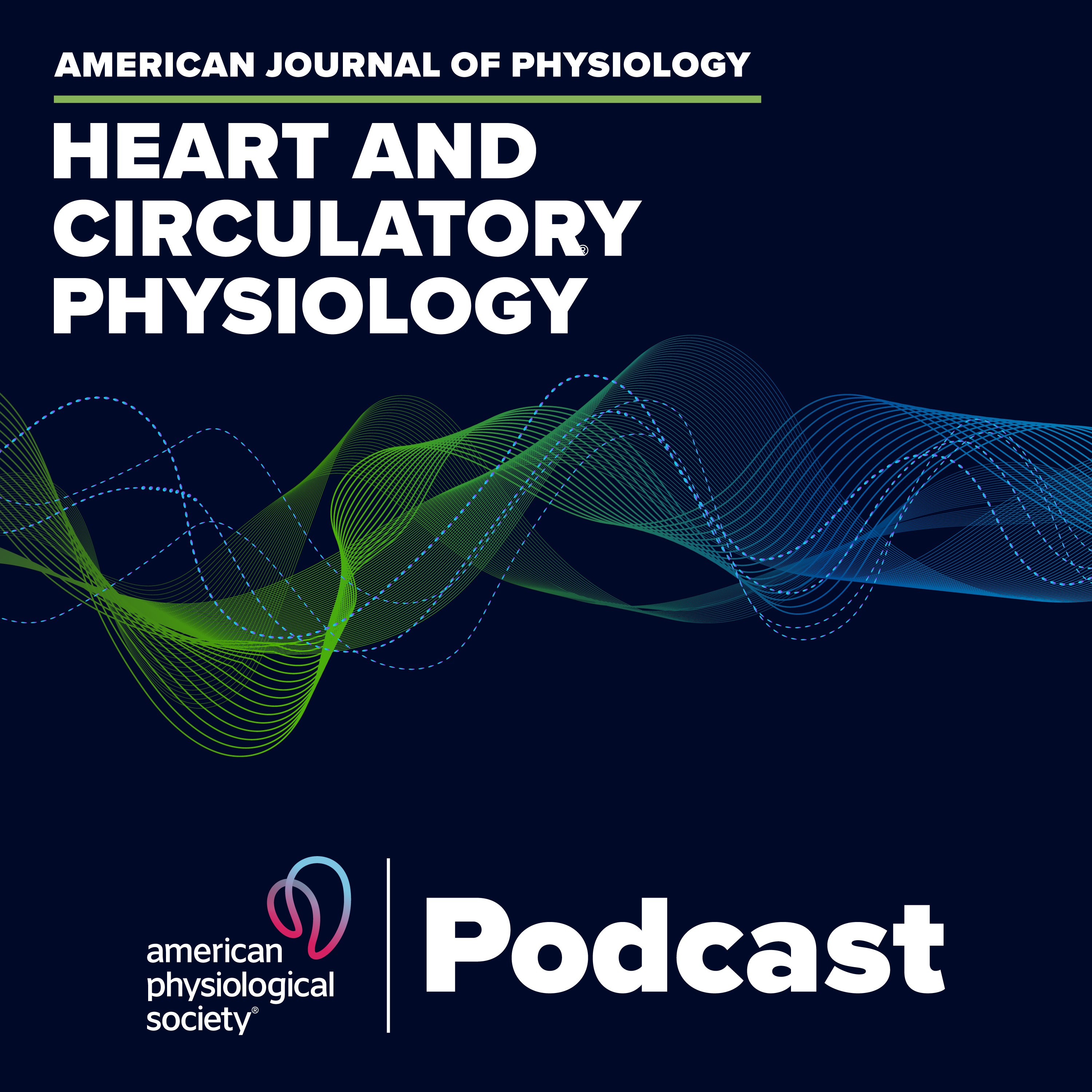Episodes

Friday Oct 11, 2013
3D Printing Physiology Laboratory Technology
Friday Oct 11, 2013
Friday Oct 11, 2013
Is 3D printing an attainable reality or a futuristic ideal? In their recently published Perspective, Sulkin et al argue that small-scale instrumentation manufacturing in plastic from a 3D desktop printer is not only here and now, but also affordable. Listen to our lively and engaging podcast as Consulting Editor Dr. Steven P. Jones interviews senior author Dr. Igor Efimov (Washington University in St. Louis) and leading expert Dr. Hee Cheol Cho (Cedars-Sinai Heart Institute) about ancient printing techniques, the inherent tinkering work methods of physiologists, open source design software programs, and surprisingly low-cost printing technology. Is a 3D desktop printer the future of cardiovascular research labs everywhere? Listen and find out.
Matthew S. Sulkin, Emily Widder, Connie C. Shao, Katherine M. Holzem, Christopher Gloschat, Sarah R. Gutbrod, Igor R. Efimov 3D Printing Physiology Laboratory Technology Am J Physiol Heart Circ Physiol, published online September 16, 2013, DOI: 10.1152/ajpheart.00599.2013.

Thursday Oct 03, 2013
p90 Ribosomal S6 Kinase 3 and Interstitial Fibrosis
Thursday Oct 03, 2013
Thursday Oct 03, 2013
What is RSK3 and how can it help us uncover the underlying mechanisms of hypertrophic cardiomyopathy? Associate Editor Meredith Bond leads an engaging conversation between senior author Michael Kapiloff (University of Miami) and leading expert Nikolaos Frangogiannis (Albert Einstein College of Medicine) about the exciting new study by Passariello et al. Listen as we explore the clinical implications of targeting RSK3 as a crucial pathway in the pathogenesis of fibrosis. How can we translate the understanding of the mechanisms of RSK3 and its effect on cardiomyocytes and fibroblasts to targeted drug therapies for the nearly 5 million Americans—both children and adults—afflicted with left ventricular hypertrophy every year? Listen and learn more.
Catherine L. Passariello , Marjorie Gayanilo , Michael D. Kritzer , Hrishikesh Thakur , Zoharit Cozacov , Francesca Rusconi , David Wieczorek , Michael Sanders , Jinliang Li, Michael S. Kapiloff p90 ribosomal S6 kinase 3 contributes to cardiac insufficiency in α-tropomyosin Glu180Gly transgenic mice Am J Physiol Heart Circ Physiol, published online August 2, 2013, doi: 10.1152/ajpheart.00237.2013.

Thursday Oct 03, 2013
Late Sodium Current Inhibition Slows the Progression to Heart Failure
Thursday Oct 03, 2013
Thursday Oct 03, 2013
Can early inhibition of the late sodium current slow hypertension-induced t-tubule disruption and calcium cycling defects that lead to heart failure? Join Editor in Chief William C. Stanley as he explores the innovative work by Aistrup et al with senior author J. Andrew Wasserstrom (Northwestern University Feinberg School of Medicine) and leading expert Guy Salama (University of Pittsburgh). Listen as they discuss the effects of chronic treatment with ranolazine on T-tube disruption and the development of heart failure.
Gary L. Aistrup, Deepak K. Gupta, James E. Kelly, Matthew J. O'Toole, Amanda Nahhas, Nimi Chirayil, Sol Misener, Lauren Beussink, Neha Singh, Jason Ng, Mahendra Reddy, Thitipong Mongkolrattanothai, Nesrine El-Bizri, Sridharan Rajamani, John C. Shryock, Luiz Belardinelli, Sanjiv J. Shah, J. Andrew Wasserstrom Inhibition of the late sodium current slows t-tubule disruption during the progression of hypertensive heart disease in the rat Am J Physiol Heart Circ Physiol, published online July 19, 2013, doi: 10.1152/ajpheart.00401.2013.

Thursday Oct 03, 2013
Cardiac Overexpression of Mena Exacerbates Heart Failure in Mice
Thursday Oct 03, 2013
Thursday Oct 03, 2013
What is Mena? In this podcast we explore the innovative new work by Belmonte et al on the overexpression of Mammalian homologue of drosophila enabled (Mena) and its exacerbating effects on heart failure secondary to pressure overload. Listen as Associate Editor Ronglih Liao interviews senior author Burns Blaxall (Cincinnati Children's Hospital Medical Center) and leading expert in myocardial and cellular signaling Walter Koch (Temple University School of Medicine) about this intriguing work by Blaxall and colleagues, which explores the complexities of Mena in cellular regulation. How was Mena discovered? Does it play a role in coronary artery disease? Listen and find out.
Stephen L. Belmonte , Rashmi Ram , Deanne M. Mickelsen , Frank B. Gertler , Burns C. Blaxall Cardiac Overexpression of Mammalian enabled (Mena) Exacerbates Heart Failure in Mice Am J Physiol Heart Circ Physiol, published online July 5, 2013, DOI: 10.1152/ajpheart.00342.2013.

Thursday Sep 05, 2013
Webinar Podcast: How to Improve Your Reviewer Skills
Thursday Sep 05, 2013
Thursday Sep 05, 2013
Do you want to learn from the experts how to improve your reviewer skills? Listen to this podcast of our recent AJP-Heart and Circulatory Physiology reviewer training webinar, held September 3, 2013. Editor-in-Chief William Stanley, Senior Associate Editor David Kass, and Associate Editor Nancy Kanagy talked about the basics of reviewing for AJP-Heart and other biomedical journals, covering topics ranging from how to do high quality reviewing, what editors are looking for in a good review, and how to get review assignments from AJP-Heart and Circ. The webinar was targeted to trainees and early career independent investigators. Tune in and learn more!

Tuesday Aug 27, 2013
NOX4 is Located in Neuron Mitochondria
Tuesday Aug 27, 2013
Tuesday Aug 27, 2013
What is the source of free radicals in neurons? While it is well established that angiotensin II plays an important role in the central regulation of cardiac function, investigators have long sought to better understand the sources of reactive oxygen species in stimulated neurons. In this podcast Consulting Editor Dr. Zoltan Ungvari interviews author Adam Case (University of Nebraska Medical Center) and expert Sergey Dikalov (Vanderbilt University Medical Center) about the latest work by Case et al. Using innovative methods, and both in vitro and in vivo models, Case and co-authors have shown that NOX4 contributes to mitochondrial oxidative stress in neurons. Could NOX4 become a potential therapeutic target via peptide inhibitors for the treatment of hypertension? Tune in and find out.
Adam J. Case, Shumin Li, Urmi Basu, Jun Tian, and Matthew C. Zimmerman Mitochondrial-localized NADPH oxidase 4 is a source of superoxide in angiotensin II-stimulated neurons Am J Physiol Heart Circ Physiol, published online April 26, 2013, doi: 10.1152/ajpheart.00974.2012.

Tuesday Jul 23, 2013
Regulation of Cardiac Ryanodine Receptor by Calmodulin and S100A1
Tuesday Jul 23, 2013
Tuesday Jul 23, 2013
Are "leaking" ryanodine receptor channels during diastole really important in cardiac hypertrophy and heart failure, or are the problems actually related to ryanodine receptors that stay open too long during systole? In this podcast Associate Editor W. Gil Wier interviews lead author Gerhard Meissner (University of North Carolina at Chapel Hill) and leading expert Peter Mohler (Ohio State University) about Meissner's groundbreaking new work by Yamaguchi et al, giving us key insights into this fascinating study. Will we find out exactly which amino acid is involved in calmodulin inhibition of ryanodine receptors? Listen and learn.
Naohiro Yamaguchi, Asima Chakraborty, Tai-Qin Huang, Le Xu, Angela C. Gomez, Daniel A. Pasek, and Gerhard Meissner Cardiac hypertrophy associated with impaired regulation of cardiac ryanodine receptor by calmodulin and S100A1 Am J Physiol Heart Circ Physiol, published online May 10, 2013, doi: 10.1152/ajpheart.00144.2013.

Thursday Jul 18, 2013
Thursday Jul 18, 2013
Can hypertension be treated by substituting fat for carbohydrate in the diet? The recent work by Bosse et al found that a high fat/low carbohydrate diet improved vascular function and reduced blood pressure in hypertensive rats. Listen as Editor in Chief William C. Stanley, lead author Thunder Jalili (University of Utah) and expert Jun Ren (University of Wyoming) discuss the role of dietary fats and carbohydrates in cardiovascular function in hypertension.
John D. Bosse, Han Yi Lin, Crystal Sloan, Quan-Jiang Zhang, E. Dale Abel, Troy J. Pereira, Vernon W. Dolinsky, J. David Symons, and Thunder Jalili A low-carbohydrate/high-fat diet reduces blood pressure in spontaneously hypertensive rats without deleterious changes in insulin resistance Am J Physiol Heart Circ Physiol, published online April 19, 2013, doi: 10.1152/ajpheart.00631.2012.

Tuesday Jul 16, 2013
Signaling of Immediate Exercise Hyperemia
Tuesday Jul 16, 2013
Tuesday Jul 16, 2013
What do 21st century cardiovascular physiology and classical physiologists in 1920s Cairo, Egypt have in common? Our latest podcast explores the clinical study by Crecelius et al, which seeks to understand the signaling mechanisms involved in blood flow regulation in humans. With a nod to history, Associate Editor Ajay Shah, lead author Frank Dinenno (Colorado State University), and expert Michael Joyner (Mayo Clinic) try to unravel the mysteries of exercise hyperemia. Listen now.
Anne R. Crecelius, Brett S. Kirby, Gary J Luckasen, Dennis G Larson, and Frank A. Dinenno Mechanisms of rapid vasodilation following a brief contraction in human skeletal muscle Am J Physiol Heart Circ Physiol, published online May 3, 2013, doi: 10.1152/ajpheart.00298.2013.

Tuesday Jun 25, 2013
Breathing Rate and Steady-State Hemodynamics
Tuesday Jun 25, 2013
Tuesday Jun 25, 2013
Regulation of sympathetic nerve activity is a complex process under the best of conditions in human patients, and further complicated in disease states. In our podcast about the work by Limberg et al, Associate Editor Dr. Irving Zucker interviews lead author Jerome Dempsey (University of Wisconsin - Madison) and expert Harold Schultz (University of Nebraska Medical Center) to dig deeper into the question: Does breathing have the same marked modulatory effect on muscle sympathetic nerve activity (MSNA) in steady state activity – bursts per minute – as it does within the breath itself? Using previous studies with inconsistent results as a springboard for their own research, Dempsey and colleagues studied MSNA in human patients within breath and at steady state. What were their results? Listen in and find out.
Jacqueline K. Limberg, Barbara J. Morgan, William G. Schrage, and Jerome A. Dempsey Respiratory influences on muscle sympathetic nerve activity and vascular conductance in the steady state Am J Physiol Heart Circ Physiol, published online April 12, 2013, doi: 10.1152/ajpheart.00112.2013.

